enjoy the water
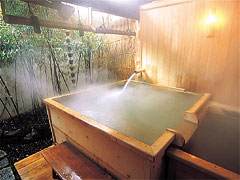 Wood & water: a natural heaven. Japanese wood baths are used for soaking, not for washing. While we relax our body in the bath, natural oils with medical properties and soothing fragrances are released in the warm water for a sensation of extreme wellbeing.
Wood & water: a natural heaven. Japanese wood baths are used for soaking, not for washing. While we relax our body in the bath, natural oils with medical properties and soothing fragrances are released in the warm water for a sensation of extreme wellbeing.
An outdoors hinoki wood "rotenburo" ->
Soaking in warm water for 30 minutes to 1 hour everyday:
It may sound strange to our westerner`s ears but your body will get instinctively in harmony with this healthy custom. Bathing in a wood tub: the scents, the soft touch of wood, the tidy beauty of its grain magnified thru the clear water, represents the ultimate holistic experience.
You will find yourself energized, rejuvaneted, relaxed. Read thru the bottom of this page to see WHY.
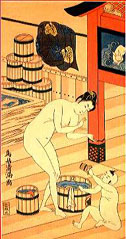 Why are the japanese so proud of their baths and hot springs? The Japanese ritual of the bath has several reasons besides the obvious purpose of hygene. A warm bath stimulates blood circulation and decongestionates the linfatic system: this is effective both in washing off the sweath of the torrid summer and in preventing cold and influenza during the rigid japanese winter. Medical evidence has been found that a correct warm bath has positive effects on the health of body and mind, also thanks to the curative and emollient effect of minerals and oils present in the water. Recent research proves how negatively charged ions present in the water and steam of a bath “scrub off” magnetic tensions and free radicals, having an “antiage” effect on the whole body. Negative ions also have experimented psychological benefits, imparting a feeling of security and sense of refreshment while they soothe the body. Such ions tend to be generated by waterfalls, fountains, and other sources of agitated water. When bathing japanese style, we first soap and scrub, then we rinse and only when we are “physically clean”, we enter in the bathtub for soaking (at least 30 minutes). Because the body is washed outside the bath, the bath water stays clean and deeply refreshing.
Why are the japanese so proud of their baths and hot springs? The Japanese ritual of the bath has several reasons besides the obvious purpose of hygene. A warm bath stimulates blood circulation and decongestionates the linfatic system: this is effective both in washing off the sweath of the torrid summer and in preventing cold and influenza during the rigid japanese winter. Medical evidence has been found that a correct warm bath has positive effects on the health of body and mind, also thanks to the curative and emollient effect of minerals and oils present in the water. Recent research proves how negatively charged ions present in the water and steam of a bath “scrub off” magnetic tensions and free radicals, having an “antiage” effect on the whole body. Negative ions also have experimented psychological benefits, imparting a feeling of security and sense of refreshment while they soothe the body. Such ions tend to be generated by waterfalls, fountains, and other sources of agitated water. When bathing japanese style, we first soap and scrub, then we rinse and only when we are “physically clean”, we enter in the bathtub for soaking (at least 30 minutes). Because the body is washed outside the bath, the bath water stays clean and deeply refreshing.
 Why are the japanese so proud of their baths and hot springs? A HINOKI bathtub is ideal for a provides a full sensory experience: beautiful white cedar with a rich grain, smooth texture, soothing lemony fragrance, and the warm comfort of soaking away all the tension and stress of the day.
Why are the japanese so proud of their baths and hot springs? A HINOKI bathtub is ideal for a provides a full sensory experience: beautiful white cedar with a rich grain, smooth texture, soothing lemony fragrance, and the warm comfort of soaking away all the tension and stress of the day.
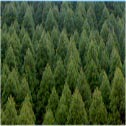 Why are the japanese so proud of their baths and hot springs? A HINOKI bathtub is ideal for a provides a full sensory experience: beautiful white cedar with a rich grain, smooth texture, soothing lemony fragrance, and the warm comfort of soaking away all the tension and stress of the day.
Why are the japanese so proud of their baths and hot springs? A HINOKI bathtub is ideal for a provides a full sensory experience: beautiful white cedar with a rich grain, smooth texture, soothing lemony fragrance, and the warm comfort of soaking away all the tension and stress of the day.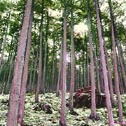 When we talk about Japanese dwellings and lifestyle, its association with the culture of wood is almost automatic. Still today most of private homes are built with a wood post-beam structure. Wood is used to manufacture cooking utensils, shoes, children`s toys. And of course, bathstubs. The remarkably straight SUGI might be best choice for buildings, as the SAKURA (cherry) is for producing objects or the MATSU (pine) is for panels and doors. But wood bathtubs are only made in HINOKI, the wood of the 1300 years old Horyuji Temple in Nara, the wood chosen by the emperors…
When we talk about Japanese dwellings and lifestyle, its association with the culture of wood is almost automatic. Still today most of private homes are built with a wood post-beam structure. Wood is used to manufacture cooking utensils, shoes, children`s toys. And of course, bathstubs. The remarkably straight SUGI might be best choice for buildings, as the SAKURA (cherry) is for producing objects or the MATSU (pine) is for panels and doors. But wood bathtubs are only made in HINOKI, the wood of the 1300 years old Horyuji Temple in Nara, the wood chosen by the emperors…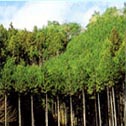 As hinoki trees suffer polluted environments, they grow mainly in "virgin" areas, where the air and water are pure. Aomori and Ishikawa in the north, Gifu prefecture, the Kiso Valley in the Chubu district and the Kochi prefecture in Shikoku are the regions with largest hinoki forests. This "purity" reflects in the wood’s appearance : light-colored, has a rich but compact straight grain. A natural clear resin permeates homogeneously the pores thus creating a natural protection against insects and rot. When cut or scrubbed, hinoki wood emanates a pleasing lemon scent for which it is famous.
As hinoki trees suffer polluted environments, they grow mainly in "virgin" areas, where the air and water are pure. Aomori and Ishikawa in the north, Gifu prefecture, the Kiso Valley in the Chubu district and the Kochi prefecture in Shikoku are the regions with largest hinoki forests. This "purity" reflects in the wood’s appearance : light-colored, has a rich but compact straight grain. A natural clear resin permeates homogeneously the pores thus creating a natural protection against insects and rot. When cut or scrubbed, hinoki wood emanates a pleasing lemon scent for which it is famous. Hinoki wood oil is highly therapeutic: it contains minerals and essential oils such as Thiol: for this reason it is used as raw materials for soaps, antiseptics, perfumes, cosmetics, and hair restoration treatments. While resins from other evergreens are known for causing skin irritations, hinoki wood oil is gentle on the body and skin: it is traditionally used to treat skin irritations and injuries thanks to its antibacterial and antifungus action. When inhalated, hinoki wood oil acts as a decongestant of the respiratory system, is used to cure asthma and as a tonic for the nervous system. For this reason, Hinoki wood oil is also widely used in aromatherpy to reduce stress.
Hinoki wood oil is highly therapeutic: it contains minerals and essential oils such as Thiol: for this reason it is used as raw materials for soaps, antiseptics, perfumes, cosmetics, and hair restoration treatments. While resins from other evergreens are known for causing skin irritations, hinoki wood oil is gentle on the body and skin: it is traditionally used to treat skin irritations and injuries thanks to its antibacterial and antifungus action. When inhalated, hinoki wood oil acts as a decongestant of the respiratory system, is used to cure asthma and as a tonic for the nervous system. For this reason, Hinoki wood oil is also widely used in aromatherpy to reduce stress.